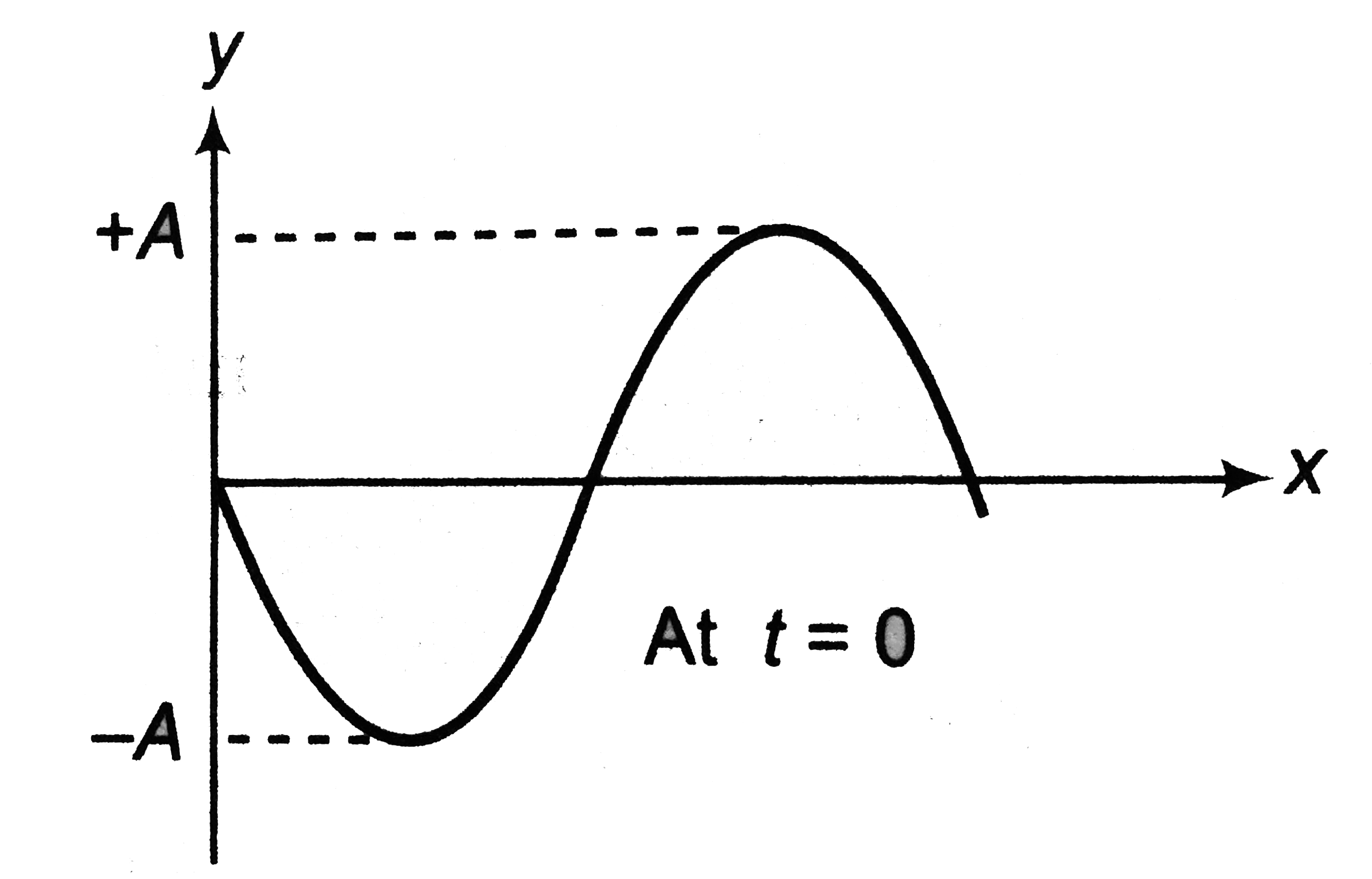A wave passes through a medium. If V is the particle velocity and a is the particle acceleration then,
y,V and 'a’ all are in the same phase
y lags behind V by a phase angle of
'a' leads y by a phase angle of
'V' leads a by a phase angle of
The correct Answer is:B, C, D
To solve the problem, we need to analyze the wave function given by y=Acos(ωt−kx) and find the relationships between the wave displacement y, particle velocity v, and particle acceleration a.
Step 1: Find the Particle Velocity v
The particle velocity v is defined as the time derivative of the displacement y. Therefore, we differentiate y with respect to time t:
v=dydt=ddt(Acos(ωt−kx))
Using the chain rule, we get:
v=−Aωsin(ωt−kx)
This can be expressed in terms of cosine:
v=Aωcos(ωt−kx+π2)
Step 2: Find the Particle Acceleration a
The particle acceleration a is defined as the time derivative of the velocity v. Therefore, we differentiate v with respect to time t:
a=dvdt=ddt(−Aωsin(ωt−kx))
Using the chain rule again, we get:
a=−Aω2cos(ωt−kx)
This can also be expressed in terms of cosine:
a=Aω2cos(ωt−kx+π)
Step 3: Analyze the Phase Relationships
Now, we can analyze the phase relationships between y, v, and a:
1. Phase of y: ϕy=ωt−kx
2. Phase of v: ϕv=ωt−kx+π2
3. Phase of a: ϕa=ωt−kx+π
From this, we can conclude:
- y lags behind v by π2 (since ϕv−ϕy=π2).
- a leads y by π (since ϕa−ϕy=π).
- v leads a by 3π2 (since ϕv−ϕa=3π2).
Conclusion
Based on the analysis, we can summarize the relationships:
- y lags behind v by π2.
- a leads y by π.
- v leads a by 3π2.
2. Phase of v: ϕv=ωt−kx+π2
3. Phase of a: ϕa=ωt−kx+π
- a leads y by π (since ϕa−ϕy=π).
- v leads a by 3π2 (since ϕv−ϕa=3π2).
- a leads y by π.
- v leads a by 3π2.
Topper's Solved these Questions
- WAVE MOTIONBOOK - AAKASH SERIESCHAPTER - WAVE MOTIONEXERCISE - LECTURE SHEET (EXERCISE-I (LEVEL-II(ADVANCED)LINKED COMPREHENSION TYPE QUESTIONS))
3 Videos
- WAVE MOTIONBOOK - AAKASH SERIESCHAPTER - WAVE MOTIONEXERCISE - LECTURE SHEET (EXERCISE-I (LEVEL-II(ADVANCED)MATRIX MATCHING TYPE QUESTIONS))
1 Videos
- WAVE MOTIONBOOK - AAKASH SERIESCHAPTER - WAVE MOTIONEXERCISE - LECTURE SHEET (EXERCISE-I (LEVEL-II(ADVANCED)STRAIGHT OBJECTIVE TYPE QUESTIONS))
5 Videos
- UNITS AND MEASUREMENTSBOOK - AAKASH SERIESCHAPTER - UNITS AND MEASUREMENTSEXERCISE - EXERCISE -3
66 Videos
- WAVE MOTION AND SOUNDBOOK - AAKASH SERIESCHAPTER - WAVE MOTION AND SOUNDEXERCISE - PROBLEMS (LEVEL - II)
97 Videos
Similar Questions
Knowledge Check
A transverse wave is represented by y=Asin(ωt−kx). For what value of the wavelength is the wave velocity equal to the maximum particle velocity?
AπA2BπAC2πADA
A travelling wave has the frequency υ and the particle displacement amplitude A. For the wave the particle velocity amplitude is ………………… and the particle acceleration amplitude is ……………………..
View SolutionA travelling wave has the frequency υ and the particle displacement amplitude A. For the wave the particle velocity amplitude is ………………… and the particle acceleration amplitude is ……………………..
View SolutionA particle move so that its position verctor varies with time as →r=Acosωtˆi+Asinωtˆj. Find the
a. initial velocity of the particle,
b. angle between the position vector and velocity of the particle at any time, and
c. speed at any instant.
View SolutionThe coordinates of a particle moving in x-y plane at any time t are (2t,t2). Find (a) the trajectory of the particle, (b) velocity of particle at time t and (c) acceleration of particle at any time t.
View SolutionThe velocity time relation of a particle is given by v =(3t2−2t−1)m/s Calculate the position and acceleration of the particle when velocity of the particle is zero . Given the initial position of the particle is 5m .
View SolutionA plane sound wave is travelling in a medium. In reference to a frame A, its equation is y=a cos (ωt−kx). Which refrence to frame B, moving with a constant velocity v in the direction of propagation of the wave, equation of the wave will be
View SolutionFor a wave described by y=Asin(ωt−kx), consider the following or not and in what direction and describe whether the particle is speeding up, slowing sown or instantanteously not accelerating?

View Solution
